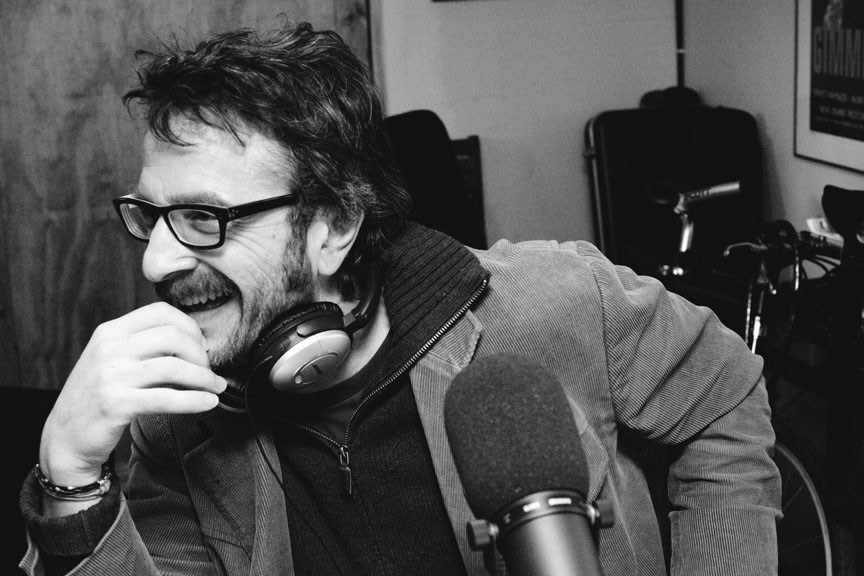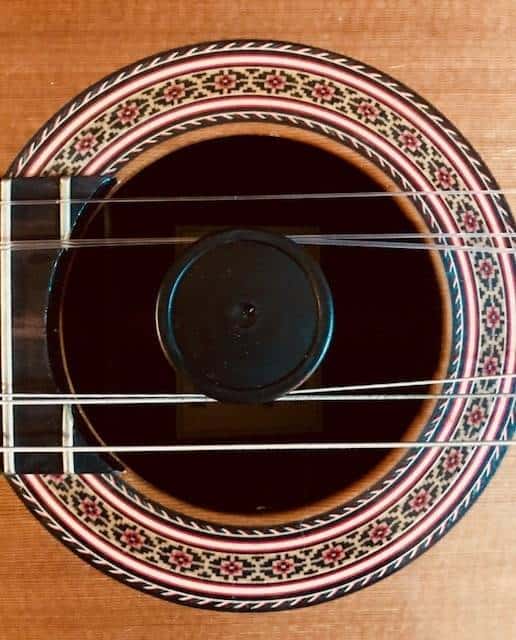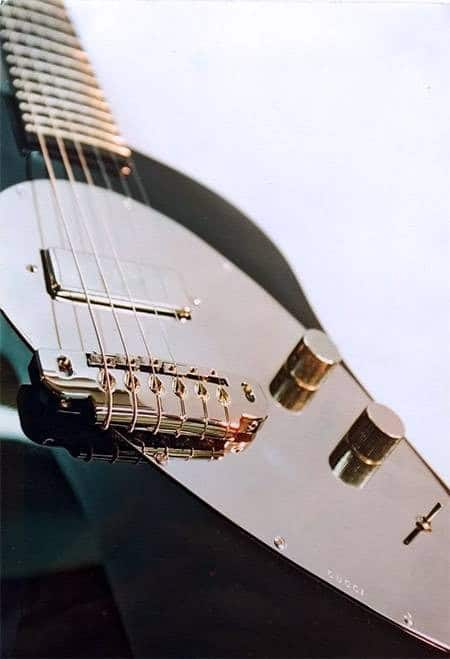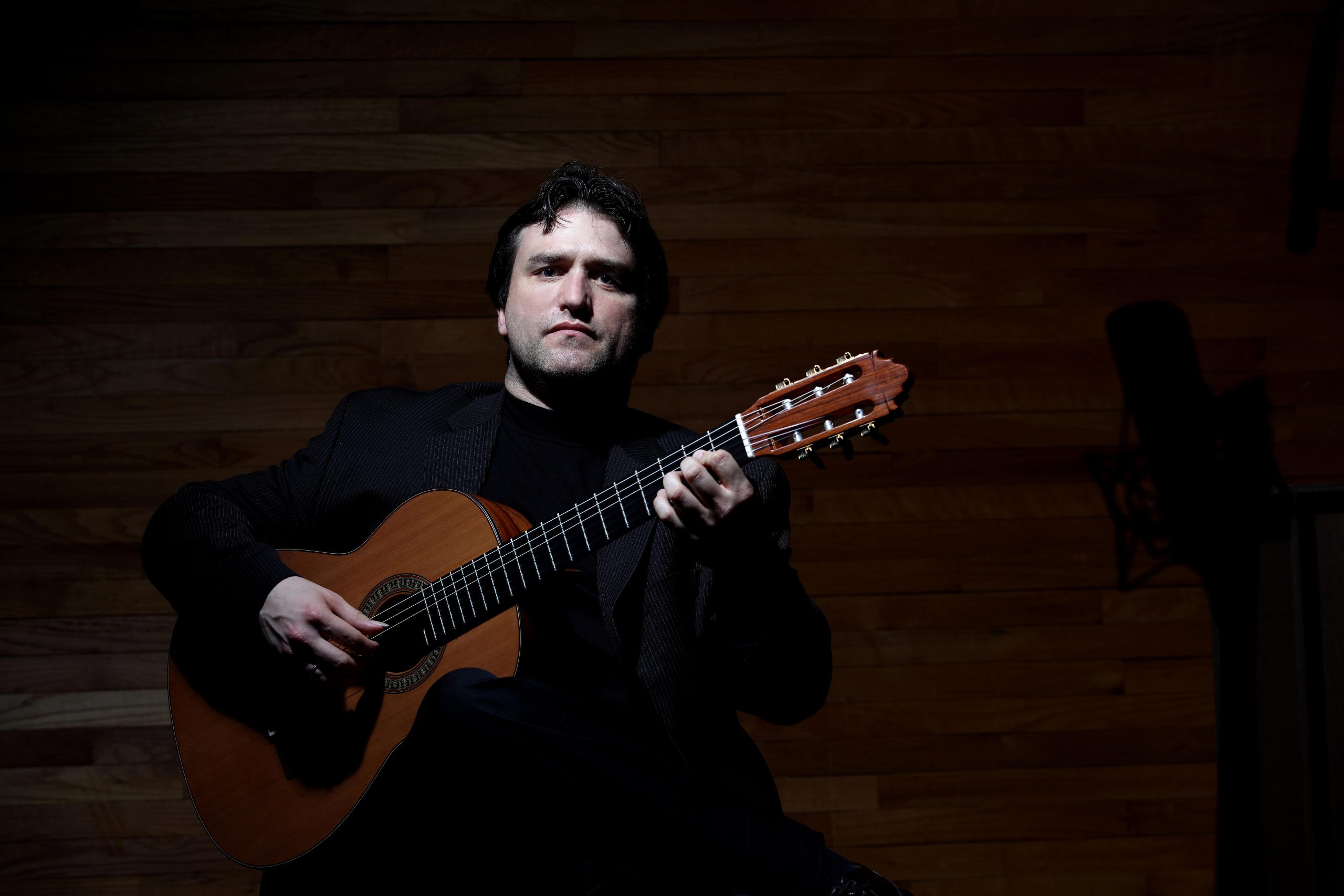
A year or so ago, backstage at the New York Guitar Seminar at Mannes, Sharon Isbin suggested that I write about the inventor of a guitar support device. “His name is Tim Johnson, and a couple of my students at Juilliard are using a prototype of his arm rest.”
I was not expecting a three-hour long phone call with Mr. Johnson or his crazy story of how he came to invent his arm and leg support devices. Nor was I expecting to skip writing it up for a magazine when it became clear that what he really needed was a decent-looking website.
Johnson, who is 55 years old, grew up on his family’s century-old farm in central Illinois, graduated from Illinois Wesleyan University with a BA in Business Administration. He served as the guitar instrumental soloist in the 505th Air Force Band of the Midwest for four years before he landed full scholarship to study with Ricardo Iznaola at the University of Denver.
During his junior year, Johnson was leaving his job at a local music shop when he experienced a severe accident that left him unable to sit, stand or play his guitar. When he began therapy to walk again, he required crutches and discovered that it was going to take some time and patience before he could attempt to sit in the classical guitar position using the traditional footstool.
Jonathan Leathwood, a teaching associate professor and Guitar & Theory Chair at the Lamont School of Music at the University of Denver, suggested to Johnson that he try the Alexander Technique, which fosters awareness of body movement to relieve stress. As Johnson built up the stamina to sit with his guitar for small stretches, he carefully observed the dynamics of his body movements in a full-length mirror while playing. Impressively, Johnson did not give up, quit school and quit the guitar.
Instead, he took a situation that would have defeated most and turned it into an invention that alleviates a lot of the awkwardness and body tension that comes from sitting with one foot propped onto a footstool like a 19th Century Spaniard for ridiculous, rump-numbing hours at a time. At 6’3”, Johnson always felt like playing the classical guitar looked like a ukulele in his hands, but his observations during his practice sessions lead him to postulate a theory that inspired him to invent his Guitarest Arm Support as his graduation thesis.
With assistance from Gerald Davis, President of Denver Sheet Metal, Johnson developed successive prototypes of this guitar support device in both an arm rest and an adjustable leg rest. And when the Grammy-award-winning classical guitarist Sharon Isbin tried out the arm support, Johnson gained valuable insight that enabled him to produce a new, patented model that is fully adjustable to accommodate the height of any guitar player and allows them to achieve full ergonomic advantage and comfort when playing.
The Guitarest Classical/Fingerstyle supports also include a fully adjustable leg rest device. In full disclosure, I was not paid, bribed or induced in any way to write this article. As someone who has undergone a number of serious surgeries, which few would fathom if they watched me lift a 165 lbs. barbell with the ease of a picnic ant making off with an entire potato chip, I admire anyone who demonstrates the grit to persevere and utilize their hard-won insight in a way that benefits others.
I felt my skills in design and animation would serve the inventor best at the time so I designed his official logo, website and the opening four seconds of his home page video, which features an animated graphic and a soundwave engineered from the triplets of Mauro Giuliani’s Grand Overture played by Johnson in the recording that won him his scholarship. Gerald Davis created the AutoCAD-generated animation of the figure that demonstrates the operation of the Guitarest support devices.
For more information, please visit www.guitarest.com.
* * *









